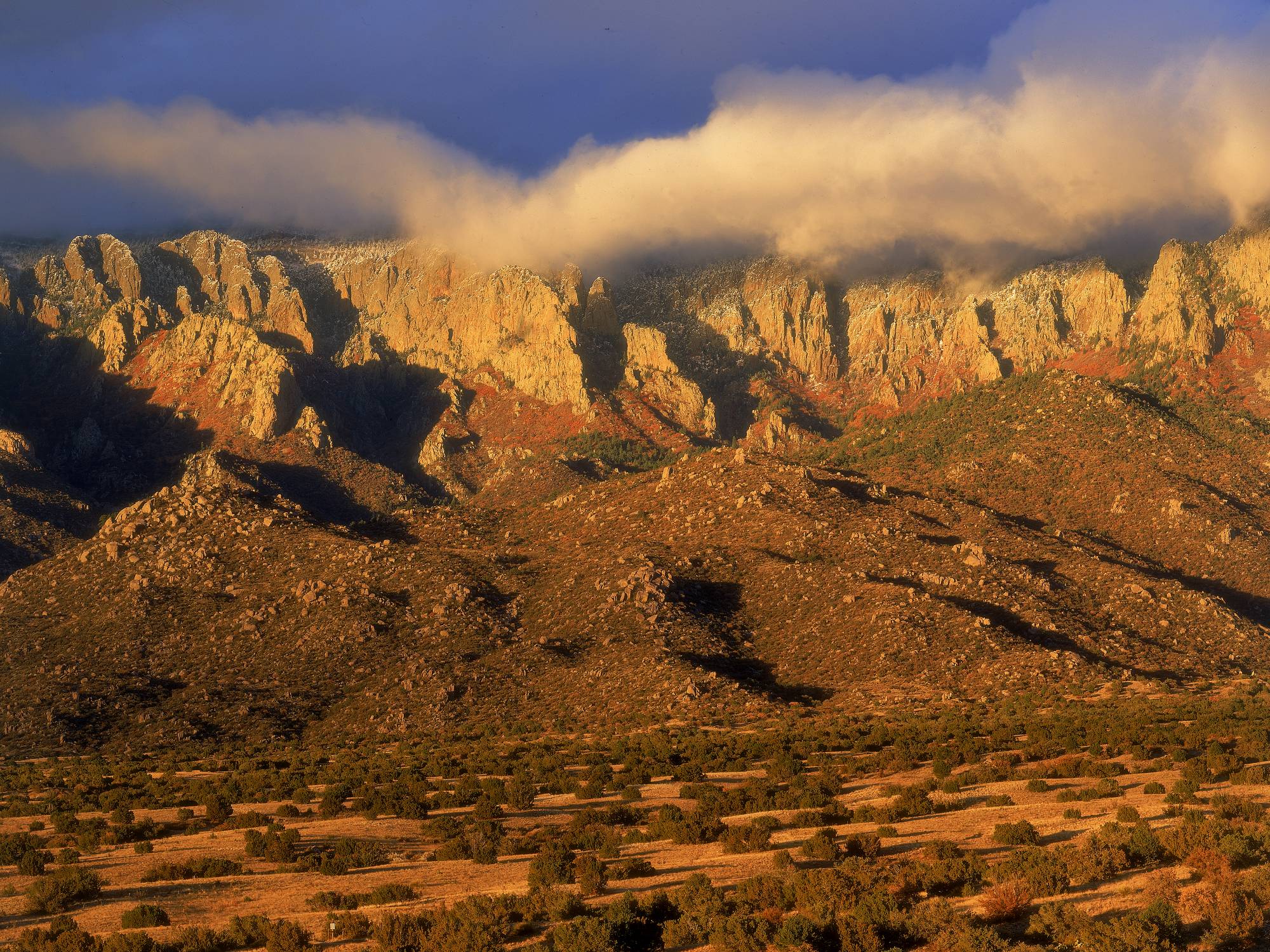SANDIA RANGER DISTRICT - TIJERAS, NM
Contact Information
District Ranger: Crystal Powell
District & Mailing Address: 11776 Hwy 337, Tijeras, NM 87059
Phone: 505.281.3304
Fax: 505.281.1176
Overview
Just east of Albuquerque are the most visited mountains in New Mexico. Millions of people journey into the Sandia Mountains each year. More than half these visitors ride the Sandia Peak Tram or drive the Sandia Crest National Scenic Byway to take in spectacular panoramic views of Central New Mexico and to enjoy many other recreational opportunities. The Four Seasons Visitor Center offers year round interpretive exhibits and seasonal programs at the upper Tram Building. The Scenic Byway has several newly remodeled picnic grounds with shelters and group areas for reservation.
The National Fee Project is currently in operation for all developed sites on the Scenic Byway and along the west and north sides of the district in the Juan Tabo, Basin, and Las Huertas Canyon Areas. A daily amenity fee of $3.00 is required for all vehicles parking in designated, developed recreation sites around the District. An annual pass is favorable, with particular support given to the concept of fees staying available to the unit where they are collected.
The Sandias are part of the signature of Albuquerque's unique sense of place. They serve as a premier open space refuge to a population of over 700,000 people in the extended metropolitan area. Over one-third of the State's school-age population lives within an hour's drive of the Sandias, and there is a great demand for fire prevention, fire ecology, and other environmental education programs.

History
Sandia Mountain is a landmark in the spiritual universe of many active traditional Indian beliefs. It is regularly visited for ceremonial purposes by the Sandia Pueblo and at least annually by many other pueblos. It also has direct ties to Spanish land grant communities established by the King of Spain in the 1700's and Mexican land grants from the 1820's. Some Spanish land grants adjoining the Sandias are still active.
Water sources are not only sacred to Indian beliefs, but also played a key role in sustaining the agricultural bases of the land grant communities. Several ditch systems still function today, including one actively maintained in Las Huertas Canyon as an "acequia madre" for a community's agricultural water. These traditional communities are encountering greater conflicts with the growing recreational uses of the Sandias.
The lesser-known southern part of the District includes the Manzanita Mountains, which form a low ridge between the Manzano Mountains to the south and the Sandias to the north. A portion of this area is in the Military Withdrawal, where public use has been restricted since 1943. The Military Withdrawal and adjacent Forest Service land has been the subject of intensive ecosystem planning to reduce fuel loads and the risk of wildfire, to enhance wildlife habitat and ecosystem health, and to improve recreational opportunities.
Wildlife
In many ways wildlife, fish and rare plants are the measure of our success as ecosystem managers. Species diversity and abundance relate to ecosystem health. The District wildlife program features habitat enhancement projects, inventory and monitoring of emphasis species, and informative and education. The program relies heavily on the support of partnership groups such as the Albuquerque Wildlife Federation, Hawkwatch International, Central New Mexico Audubon Society, Sandia Mountain Bearwatch, and the New Mexico Habitat Stamp program; the wildlife program is integrated into fire/fuels, recreation, and forest health project objectives. There is an unmet opportunity to use funds from the Fee Project to help interpret wildlife and ecosystems on the District; some interpretation featuring wildlife is occurring, but much more could be done. Opportunities for Nature Watch-type activities are outstanding.

Partnerships
The Sandia District faces tremendous customer service and urban sprawl challenges in managing the Sandia and Manzanita Mountains. Partnerships with interpretive associations, local friends groups, volunteers, and agency collaboration provide many of the customer support services on the District, including a variety of summer programs such as Bird Walks,WildflowerWalks and "Star Party" Astronomy Nights.
The Tijeras Pueblo Archaeological site is visited by hundreds of school children each year. They learn about the history of human impact on and interaction with the Sandia Mountain ecosystem. Our volunteers provide customer service and trail maintenance on the ground throughout the District. As part of the effort to respond to issues which arisedue to urban sprawl, the District has increased its collaboration with surrounding communities in county planning, regional transportation planning, open space designation, and rural economic and tourism development.
Challenges
Traditional community values are being heavily impacted by urban sprawl, producing many challenges to the Forest Service in its efforts to manage for a full range of user groups. The motorized user groups in particular have greatly reduced opportunities on the Sandias and Manzanitas. Bow hunting is still allowed, but no discharging of firearms in permitted. Forest residents are more open to fire's role to improve forest health. Joint efforts with NM State Forestry are producing good results. The Sandias and Manzanitas are primary raptor and geotropically avian flyways. Many collaborative efforts are in place to monitor and record affects to these bird populations.
In the past several years we have started an aggressive forest health program in the wildland/urban interface. Objectives range from fuels treatments along subdivision boundaries to bringing back the Aspen stands along the Sandia Crest National Scenic Byway. Initial efforts were met with protest and threats of lawsuits, but gradually public approval has shifted; now there is a waiting list of homeowner associations who whish to become involved in forest health projects with the District (and with NM State Forestry).

Alerts & Warnings
- NEVER Bring or Use Fireworks on Federal Lands. It is Illegal.
- 03-03-06-24-03 Tempoprary Area Closure - Lake Marvin Area - Smokehouse Fire
- 03-03-03-24-01 Bear Trap Fire Area and Road Closures
- Occupancy & Use Prohibitions Forest Order #03-03-00-23-03
- Discharging a firearm, air rifle, or gas gun is prohibited



